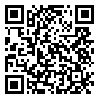1. Wigal S, Chappell P, Palumbo D, Lubaczewski S, Ramaker S, Abbas R. Diagnosis and treatment options for preschoolers with attention–deficit/hyperactivity disorder. J Child Adolesc Psychopharmacol. 2020;30(2):104–18. [
DOI]
2. Connor DF. Preschool attention deficit hyperactivity disorder: a review of prevalence, diagnosis, neurobiology, and stimulant treatment. J Dev Behav Pediatr. 2002;23(1 Suppl):S1-9. [
DOI]
3. Jacobson LA, Crocetti D, Dirlikov B, Slifer K, Denckla MB, Mostofsky SH, et al. Anomalous brain development is evident in preschoolers with attention–deficit/hyperactivity disorder. J Int Neuropsychol Soc. 2018 Jul;24(6):531–9. [
DOI]
4. Danielson ML, Bitsko RH, Ghandour RM, Holbrook JR, Kogan MD, Blumberg SJ. Prevalence of parent–reported ADHD diagnosis and associated treatment among U.S. children and adolescents, 2016. J Clin Child Adolesc Psychol. 2018;47(2):199–212. [
DOI]
5. Kessi M, Duan H, Xiong J, Chen B, He F, Yang L, et al. Attention–deficit/hyperactive disorder updates. Front Mol Neurosci. 2022;15:925049. [
DOI]
6. Kofler MJ, Singh LJ, Soto EF, Chan ESM, Miller CE, Harmon SL, et al. Working memory and short–term memory deficits in ADHD: a bifactor modeling approach. Neuropsychology. 2020;34(6):686–98. [
DOI]
7. Irwin LN, Soto EF, Chan ESM, Miller CE, Carrington–Forde S, Groves NB, et al. Activities of daily living and working memory in pediatric attention–deficit/hyperactivity disorder (ADHD). Child Neuropsychol. 2021;27(4):468–90. [
DOI]
8. Rubia K. Cognitive neuroscience of attention deficit hyperactivity disorder (ADHD) and its clinical translation. Front Hum Neurosci. 2018;12:100. [
DOI]
9. Sharma A, Gerbarg PL, Brown RP. Non–pharmacological treatments for ADHD in youth. Adolesc Psychiatry (Hilversum). 2015;5(2):84–95. [
DOI]
10. Salehinejad MA, Wischnewski M, Nejati V, Vicario CM, Nitsche MA. Transcranial direct current stimulation in attention–deficit hyperactivity disorder: a meta–analysis of neuropsychological deficits. PLoS One. 2019;14(4):e0215095. [
DOI]
11. Bandeira ID, Guimarães RSQ, Jagersbacher JG, Barretto TL, de Jesus–Silva JR, Santos SN, et al. Transcranial direct current stimulation in children and adolescents with attention–deficit/hyperactivity disorder (ADHD): a pilot study. J Child Neurol. 2016;31(7):918–24. [
DOI]
12. Breitling C, Zaehle T, Dannhauer M, Tegelbeckers J, Flechtner HH, Krauel K. Comparison between conventional and HD–tDCS of the right inferior frontal gyrus in children and adolescents with ADHD. Clin Neurophysiol. 2020;131(5):1146–54. [
DOI]
13. Nejati V, Salehinejad MA, Nitsche MA, Najian A, Javadi AH. Transcranial direct current stimulation improves executive dysfunctions in ADHD: implications for inhibitory control, interference control, working memory, and cognitive flexibility. J Atten Disord. 2020;24(13):1928–43. [
DOI]
14. Prehn–Kristensen A, Munz M, Göder R, Wilhelm I, Korr K, Vahl W, et al. Transcranial oscillatory direct current stimulation during sleep improves declarative memory consolidation in children with attention–deficit/hyperactivity disorder to a level comparable to healthy controls. Brain Stimul. 2014;7(6):793–9. [
DOI]
15. Daneman M, Carpenter PA. Individual differences in working memory and reading. Journal of Verbal Learning & Verbal Behavior. 1980;19(4):450–66. [
DOI]
16. Mojtabazadeh M, Asadzadeh H, Karimi Y, Delavar A. The relationship between working memory, anxiety and students academic performance. Journal of Educational Psychology. 2021;1(1):59. [Persian] [
Article]
17. Robertson IH, Ward T, Ridgeway V, Nimmo–Smith I. The structure of normal human attention: the test of everyday attention. J Int Neuropsychol Soc. 1996;2(6):525–34. [
DOI]
18. Manly T, Anderson V, Nimmo–Smith I, Turner A, Watson P, Robertson IH. The differential assessment of children's attention: the test of everyday attention for children (TEA–Ch), normative sample and ADHD performance. J Child Psychol Psychiatry. 2001;42(8):1065–81. [
DOI]
19. Cooley EL, Morris RD. Attention in children: a neuropsychologically based model for assessment. Developmental Neuropsychology. 1990;6(3):239–74. [
DOI]
20. Fathi N, Mehraban AH, Akbarfahimi M, Mirzaie H. Validity and reliability of the test of everyday attention for children (TEACH) in iranian 8–11 year old normal students. Iran J Psychiatry Behav Sci. 2017;11(1): e2854. [
DOI]
21. Fregni F, Liguori P, Fecteau S, Nitsche MA, Pascual–Leone A, Boggio PS. Cortical stimulation of the prefrontal cortex with transcranial direct current stimulation reduces cue–provoked smoking craving: a randomized, sham–controlled study. J Clin Psychiatry. 2008;69(1):32–40. [
DOI]
22. Li Q, Fu Y, Liu C, Meng Z. Transcranial direct current stimulation of the dorsolateral prefrontal cortex for treatment of neuropsychiatric disorders. Front Behav Neurosci. 2022;16:893955. [
DOI]
23. Rubia K, Westwood S, Aggensteiner PM, Brandeis D. Neurotherapeutics for attention deficit/hyperactivity disorder (ADHD): a review. Cells. 2021;10(8):2156. [
DOI]
24. Depue BE, Burgess GC, Willcutt EG, Ruzic L, Banich MT. Inhibitory control of memory retrieval and motor processing associated with the right lateral prefrontal cortex: evidence from deficits in individuals with ADHD. Neuropsychologia. 2010;48(13):3909–17. [
DOI]





